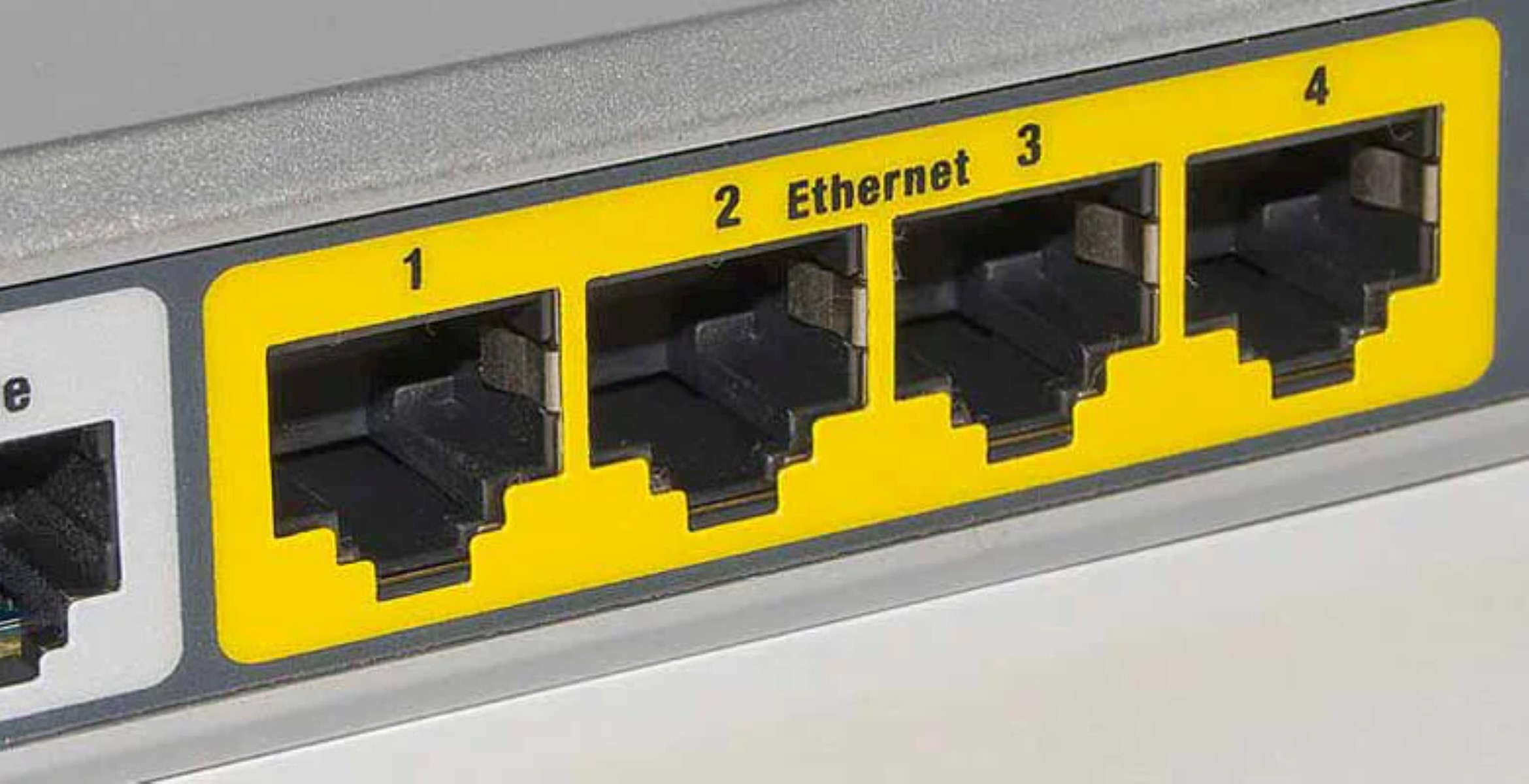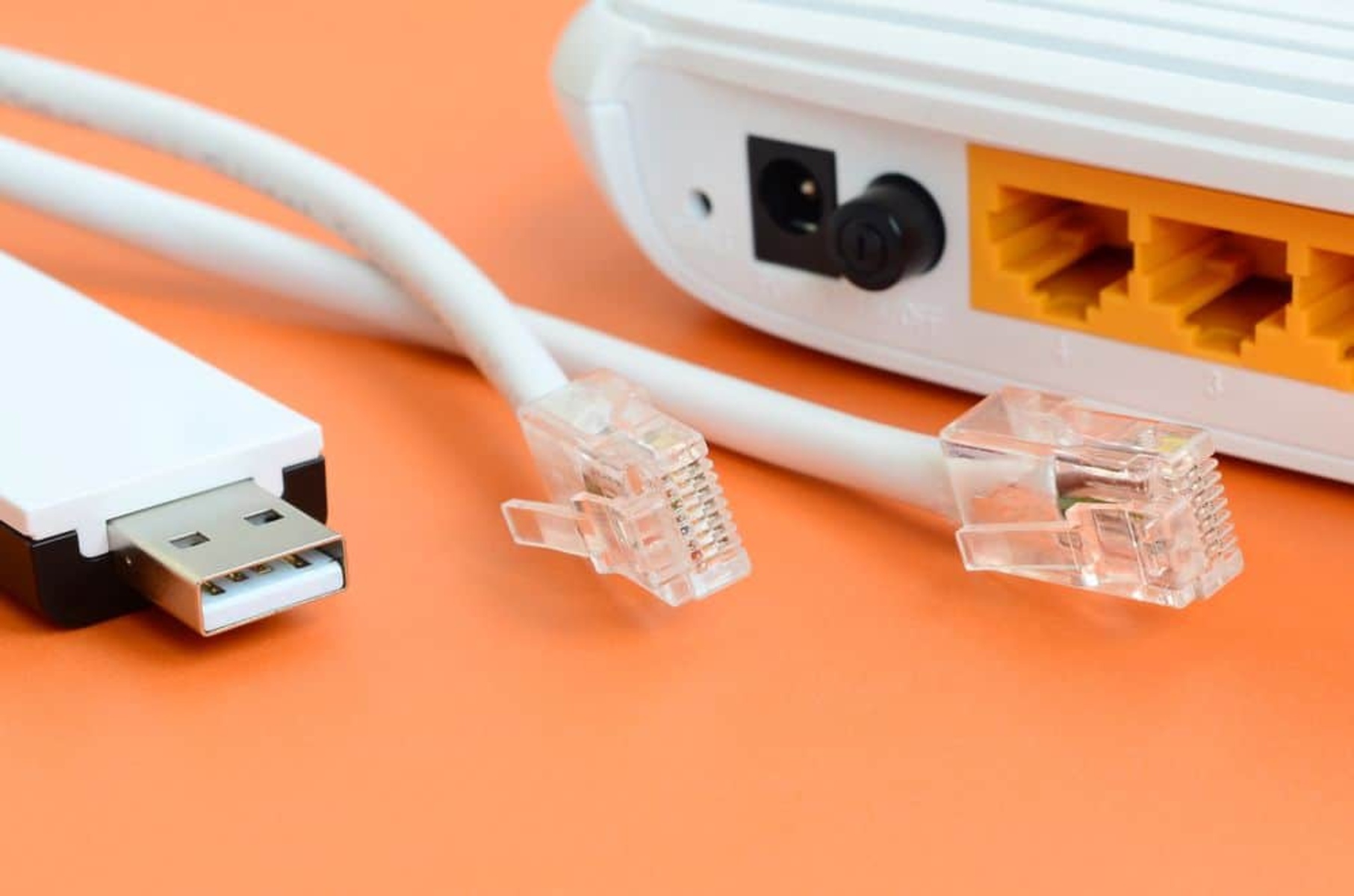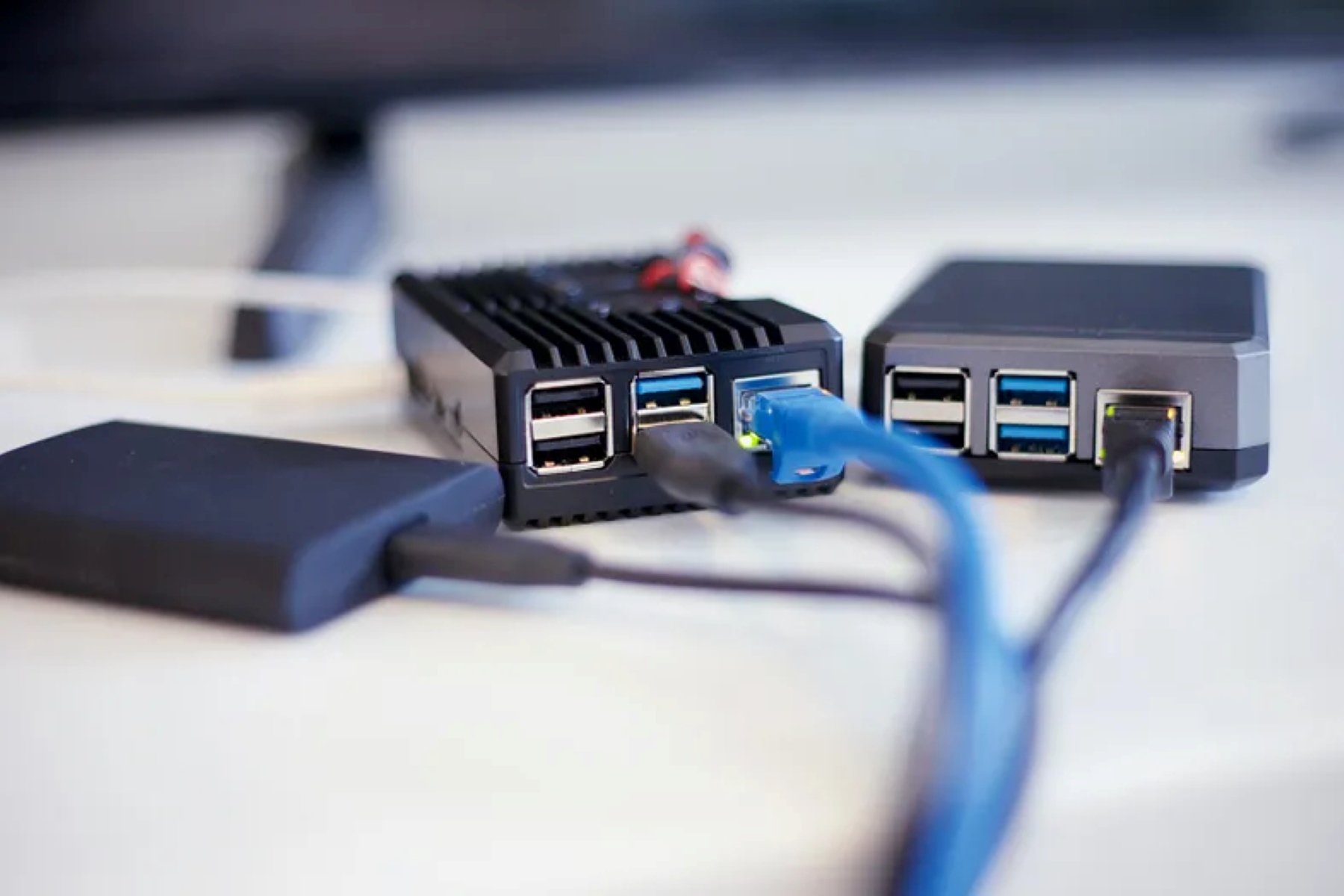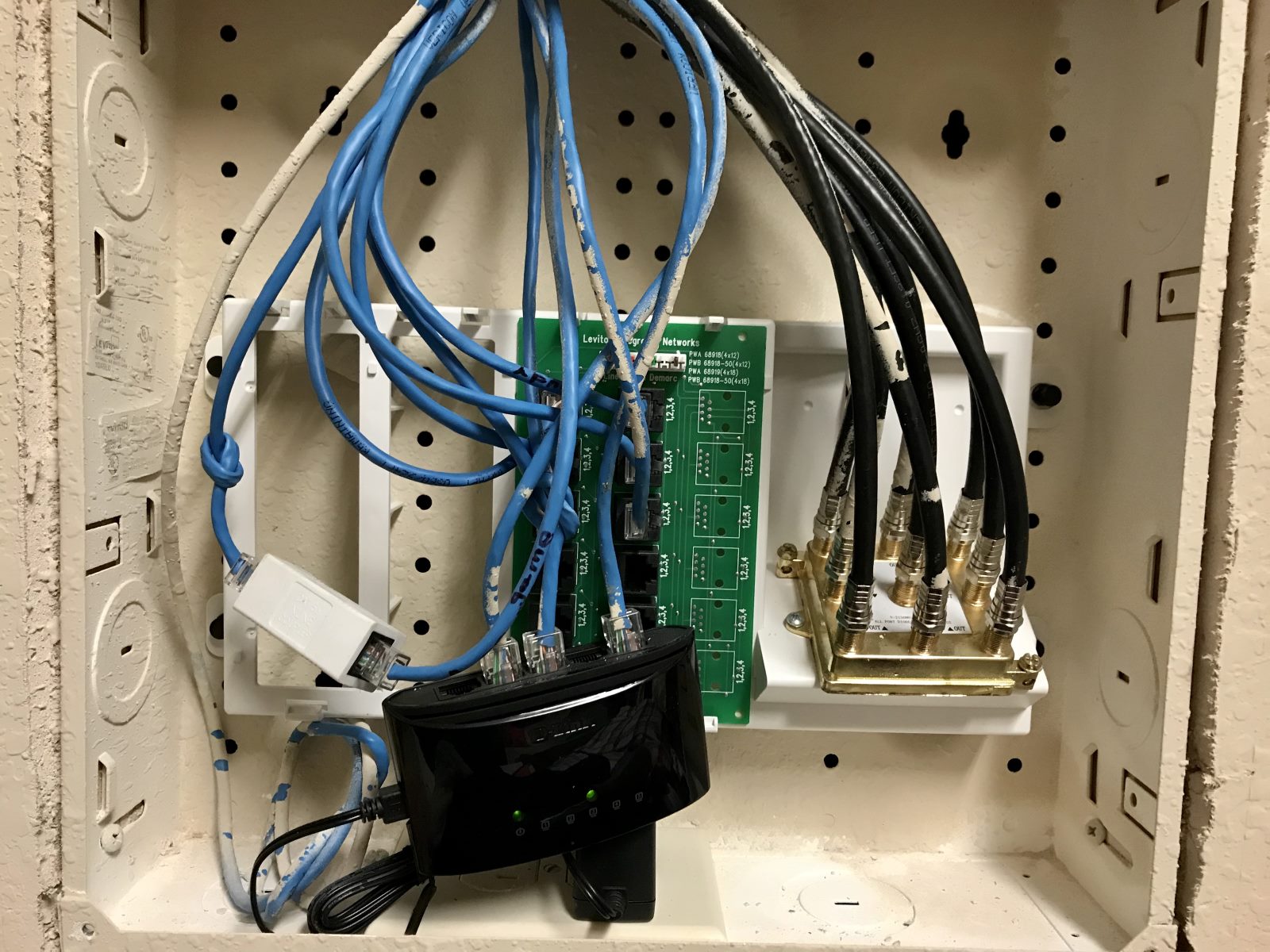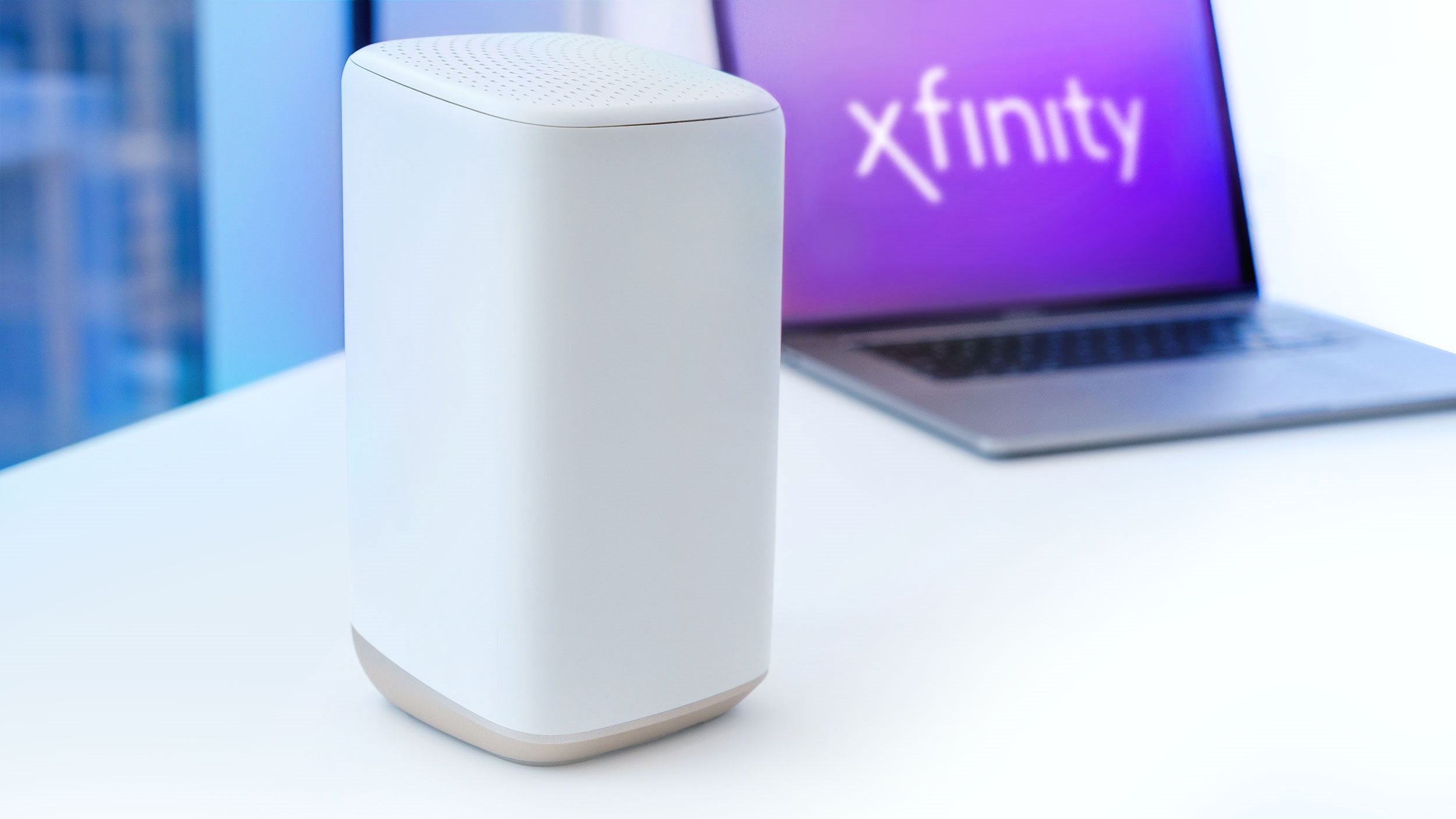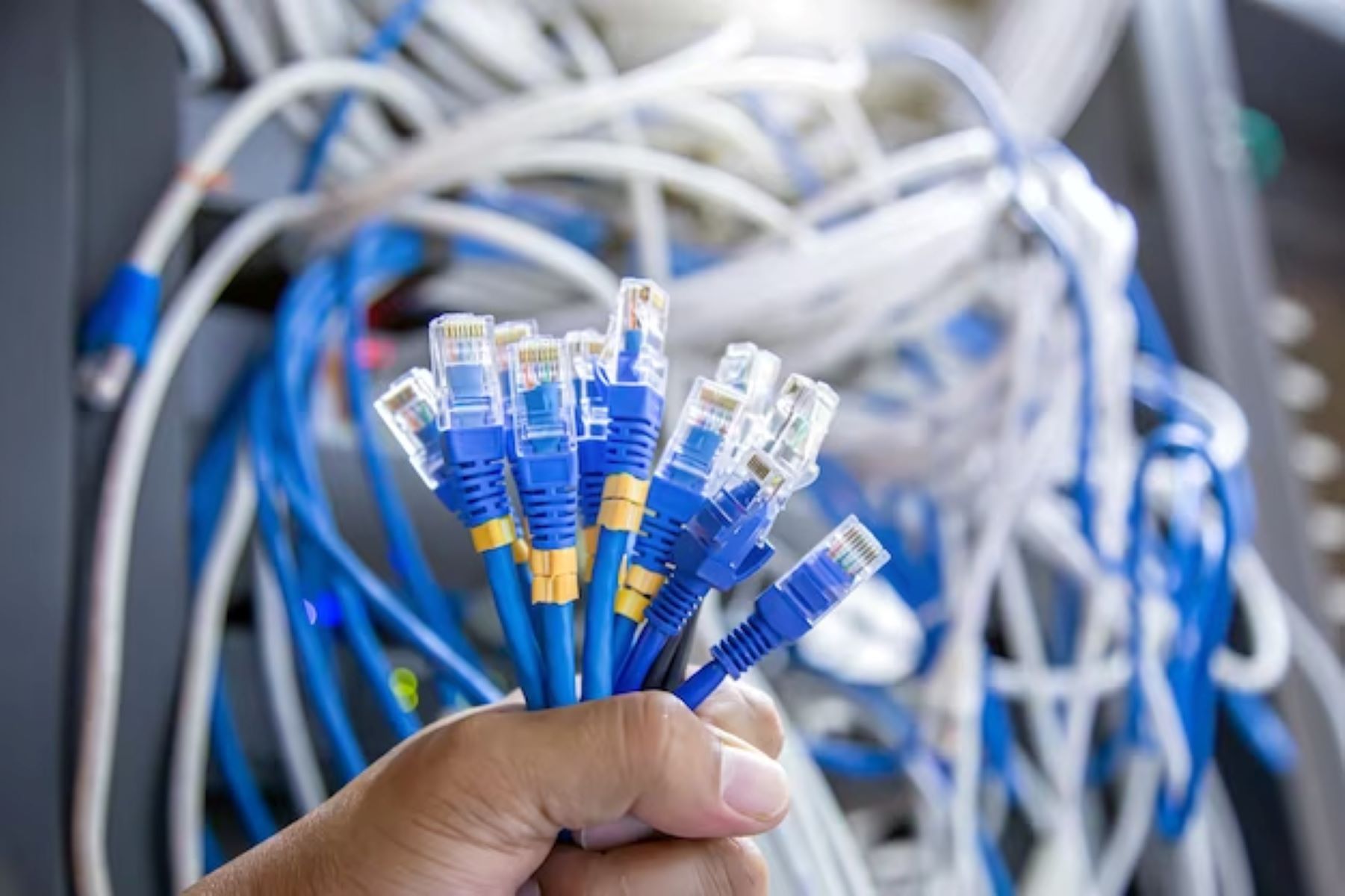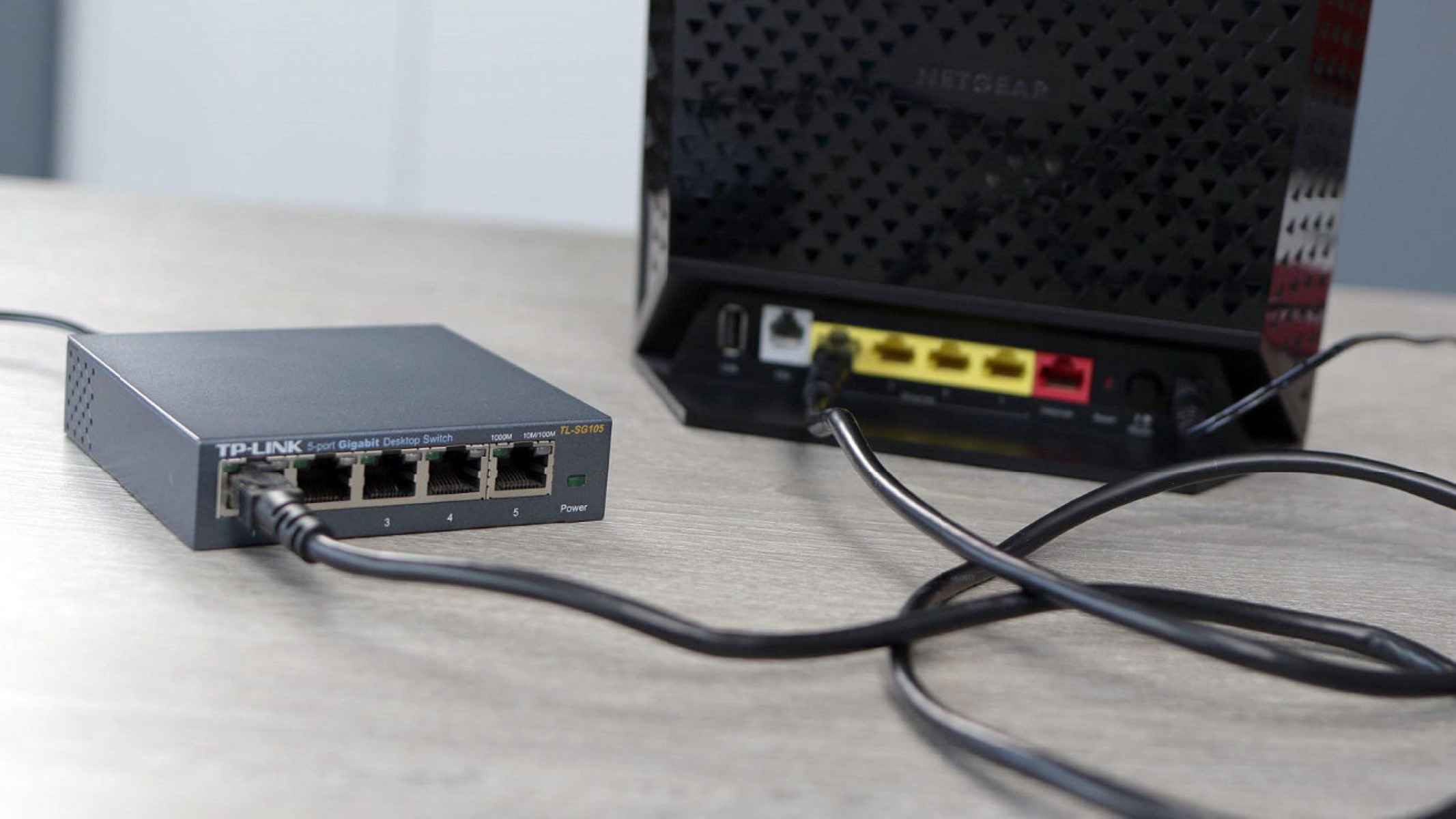Introduction
A router is an essential device when it comes to setting up a network in your home or office. It serves as the central hub that connects all your devices to the internet, allowing them to communicate with each other and access online resources. One of the key features of a router is its Ethernet ports, which play a crucial role in establishing a wired connection between your devices and the router.
Ethernet ports are a type of hardware interface that enables the transfer of data over a local area network (LAN). They provide a reliable and high-speed connection, making them ideal for devices that require stable and fast internet access, such as desktop computers, gaming consoles, and smart TVs.
In this article, we will explore the different types of Ethernet ports found on routers, consider how many Ethernet ports are typically available on routers, discuss the importance of Ethernet ports, and highlight the factors to consider when choosing a router with Ethernet ports.
Whether you are setting up a home office, creating a gaming setup, or building a network for your small business, understanding the significance of Ethernet ports on a router will help you make informed decisions to enhance your network connectivity.
What is a router?
A router is a networking device that acts as a central point to connect multiple devices to each other and to the internet. It serves as a traffic director that manages the flow of information between devices in a network. Essentially, a router is responsible for directing data packets between networks, ensuring that they reach their intended destination efficiently and securely.
Routers are equipped with various ports and interfaces to accommodate different types of connections. One of the most common types of ports found on a router is the Ethernet port. This port allows devices to establish a wired connection to the router, enabling fast and stable data transfer.
Aside from Ethernet ports, routers also typically include other ports such as WAN (Wide Area Network) ports, which connect the router to the internet, and USB ports, which enable the attachment of external devices like printers or storage devices. Additionally, routers often feature wireless capabilities, allowing devices to connect to the network via Wi-Fi.
Moreover, routers contain software and firmware that provide a range of features and settings, such as network management, security protocols, and quality of service controls. These features enable users to customize their network settings, prioritize specific devices or applications, and secure their network from unauthorized access.
Overall, routers are an indispensable part of modern networking infrastructure. They facilitate seamless communication between devices, enable high-speed internet connectivity, and offer a range of features to optimize network performance and security.
What is an Ethernet port?
An Ethernet port, also known as an RJ-45 port, is a hardware interface that allows devices to establish a wired connection to a network. It is the most common type of port used for local area networks (LANs) and is found on a variety of devices, including routers, switches, computers, gaming consoles, and smart TVs.
The Ethernet port uses Ethernet cables, which are typically Category 5 (CAT5) or Category 6 (CAT6) cables, to transmit data between devices. These cables consist of four twisted pairs of wires that are designed to minimize signal interference and provide reliable and high-speed data transfer.
An Ethernet port is capable of providing a fast and stable connection, making it ideal for devices that require a consistent and high-bandwidth internet connection. Some common applications of Ethernet ports include connecting desktop computers, servers, gaming consoles, IP cameras, and network-attached storage (NAS) devices to a network.
One of the advantages of using Ethernet ports is that they offer a more reliable and secure connection compared to wireless connections. Wired connections are less susceptible to interference from other electronic devices or physical obstructions, which can negatively impact the speed and stability of wireless connections.
Furthermore, Ethernet ports support higher data transfer speeds compared to wireless connections. Depending on the capabilities of the equipment and the type of Ethernet cable used, data transfer rates can range from 10 Mbps (megabits per second) to 10 Gbps (gigabits per second) or even higher for advanced Ethernet technologies.
Overall, an Ethernet port provides a reliable and high-speed connection for devices, offering stability and performance benefits for various applications. Whether it’s for gaming, streaming, or data-intensive tasks, Ethernet ports are a preferred choice when a fast and stable internet connection is required.
Why are Ethernet ports important?
Ethernet ports play a vital role in network connectivity and are important for several reasons:
1. Reliable and stable connection: Ethernet ports provide a stable and reliable connection compared to wireless connections. This is especially important for devices that require a consistent and high-bandwidth internet connection, such as desktop computers, gaming consoles, and media servers.
2. Fast data transfer speeds: Ethernet ports support high data transfer speeds, allowing for faster file transfers, smoother streaming, and online gaming with minimal lag. The use of wired connections can significantly enhance the overall user experience, especially for data-intensive tasks.
3. Reduced latency: Ethernet ports help reduce network latency, which refers to the delay in sending and receiving data. This is crucial for activities like online gaming, video conferencing, and real-time streaming, where even minor delays can impact performance and user experience.
4. Secure connection: Wired connections via Ethernet ports offer increased security compared to wireless connections, as they are less prone to interference and hacking attempts. This can be particularly important in environments where sensitive data is being transmitted or where network security is a top priority.
5. Compatibility: Ethernet ports are widely supported and compatible with a vast range of devices, from computers and gaming consoles to smart TVs and printers. This makes it easier to connect multiple devices to a network and ensures flexible and seamless integration into existing network setups.
6. Scalability: Having Ethernet ports on a router allows for easy expansion of the network. Additional devices can be connected directly to the router using Ethernet cables, avoiding the limitations and potential performance issues associated with relying solely on wireless connections.
In summary, Ethernet ports are important because they provide a reliable, fast, and secure connection for devices, offering improved performance, reduced latency, and enhanced network scalability. Whether it’s for gaming, streaming, or data-intensive tasks, Ethernet ports are an essential component for harnessing the full potential of a network.
Different types of Ethernet ports on a router
Routers can feature different types of Ethernet ports, each offering unique capabilities and speeds. Here are the main types you may encounter:
1. 10/100 Ethernet ports: These ports support data transfer speeds of up to 100 Mbps (megabits per second). While they are relatively slower compared to other types, they are still suitable for basic internet browsing, emailing, and light data usage.
2. Gigabit Ethernet ports: Gigabit Ethernet ports, often referred to as 10/100/1000 ports, are capable of data transfer speeds up to 1 Gbps (gigabit per second). They offer significantly faster speeds than 10/100 ports and are ideal for data-intensive tasks like streaming high-definition videos, online gaming, and large file transfers.
3. 2.5 Gigabit Ethernet ports: These ports provide data transfer speeds up to 2.5 Gbps, making them suitable for even higher bandwidth applications. They are commonly found on newer, high-end routers and are typically used for demanding tasks such as 4K video streaming and heavy file transfers.
4. 5 Gigabit Ethernet ports: Similar to 2.5 Gigabit Ethernet ports, 5 Gigabit Ethernet ports offer even faster data transfer speeds of up to 5 Gbps. They provide an excellent option for users who require extremely high bandwidth connectivity for activities such as virtual reality gaming and video editing.
5. 10 Gigabit Ethernet ports: These ports are designed for professional networking environments that demand extreme data transfer speeds. With speeds up to 10 Gbps, they are commonly used for enterprise setups, data centers, and high-performance computing applications.
It’s important to note that the availability of these different types of Ethernet ports varies depending on the router model and manufacturer. In most cases, routers are equipped with a combination of Gigabit Ethernet ports, while higher-end models may feature 2.5 Gigabit or 5 Gigabit ports alongside Gigabit ports.
When choosing a router, consider the intended usage and the devices that will be connected to determine the appropriate Ethernet port speed requirements. Selecting a router with faster Ethernet ports can future-proof your network and provide optimal performance for data-intensive tasks.
How many Ethernet ports do routers usually have?
The number of Ethernet ports on a router can vary depending on the model and intended use of the router. Generally, consumer-grade routers tend to have a minimum of four Ethernet ports, while more advanced routers may offer even more. However, it’s important to note that this can vary significantly depending on the specific make and model of the router.
The inclusion of multiple Ethernet ports on a router is useful for users who have several wired devices that need to be connected to the network. This can include devices such as desktop computers, gaming consoles, media players, network-attached storage (NAS) devices, and printers.
Having multiple Ethernet ports allows for the simultaneous connection of these devices without the need for additional network switches or hubs. Each device can be connected directly to a separate Ethernet port on the router, providing a dedicated and reliable connection for each device.
It is not uncommon to find routers with four or more Ethernet ports, which should be sufficient for most home or small office setups. However, it’s always a good idea to assess your specific needs and consider potential future expansion when choosing a router. If you have a large number of wired devices or anticipate adding more in the future, selecting a router with more Ethernet ports can be beneficial.
Additionally, some higher-end routers may offer additional features such as a built-in switch, which can expand the number of available Ethernet ports even further. These routers typically provide the capability to connect multiple devices directly to the router without the need for an external switch.
In summary, the number of Ethernet ports on a router can vary, but most consumer-grade routers typically offer at least four Ethernet ports. Consider your current and future needs when selecting a router to ensure you have enough Ethernet ports to accommodate all your wired devices.
Factors to consider when choosing a router with Ethernet ports
When choosing a router with Ethernet ports, there are several important factors to consider to ensure you select the right one for your specific needs:
1. Number of Ethernet ports: Evaluate the number of devices you need to connect via Ethernet and choose a router with enough ports to accommodate them. Consider the potential for future expansion as well.
2. Speed of Ethernet ports: Depending on your internet plan and the type of devices you have, consider the speed requirements for your Ethernet ports. Gigabit Ethernet ports are now commonplace and offer fast and reliable connections for most home or small office setups.
3. Wireless capabilities: Determine whether you also need Wi-Fi capabilities in your router. While Ethernet ports provide a stable connection, Wi-Fi is essential for devices that require wireless connectivity, such as smartphones, tablets, and smart home devices.
4. Router performance: Assess the overall performance of the router, such as its processor speed, RAM, and firmware capabilities. A powerful router will handle multiple Ethernet connections and wireless devices more efficiently, ensuring smooth and uninterrupted network operations.
5. Quality of service (QoS) settings: Look for routers that offer QoS features, which allow you to prioritize certain devices or types of traffic over others. This is particularly useful if you have bandwidth-intensive applications like online gaming or video streaming that require optimal network performance.
6. Security features: Consider the security features of the router, such as firewall protection, network encryption protocols, and guest network capabilities. A router with robust security features will help safeguard your network from unauthorized access and potential cyber threats.
7. Brand and reputation: Research different router brands and read reviews to determine their reliability, customer support, and longevity. Opting for a reputable brand with a proven track record will likely result in a more reliable and durable router.
8. Price: Set a budget for your router purchase and compare prices of models that meet your requirements. Consider the value for money, balancing features and performance with the price point that fits your budget.
By considering these factors, you can make an informed decision when choosing a router with Ethernet ports that will meet your specific networking needs and provide reliable connectivity for all your devices.
Can you have too many Ethernet ports on a router?
While having multiple Ethernet ports on a router can be beneficial for connecting multiple devices, it is possible to have too many Ethernet ports for your specific needs. Here are some considerations to keep in mind:
1. Overestimating the number of devices: If you anticipate connecting a large number of devices via Ethernet but end up with many unused ports, it may be wasteful and unnecessary. Unused ports are not serving any purpose and can be avoided by choosing a router with an appropriate number of Ethernet ports.
2. Limited available network bandwidth: Each connected device on a network will consume network bandwidth. If you have a large number of devices simultaneously transferring data over Ethernet, it can strain the available bandwidth and potentially lead to slower network speeds for all connected devices. Assess your network’s capacity and usage patterns to determine the appropriate number of Ethernet ports you actually need.
3. Additional cost and complexity: Routers with a higher number of Ethernet ports often come at a higher cost. If the extra ports are not needed, you may end up paying more for a router with unnecessary features. Additionally, more ports can make cable management and troubleshooting more complex.
4. Sufficient alternatives: With the advancements in wireless technology, many devices now support wireless connectivity. Consider whether some of your devices can be connected wirelessly instead of utilizing Ethernet ports. This can help free up ports and provide flexibility for devices that do not require a wired connection.
5. Future expansion: While it is essential to have enough Ethernet ports to support your current needs, it is also wise to consider potential future expansion. If you have plans to add more devices or expand your network, having a few extra Ethernet ports can be advantageous to accommodate future growth without the need for additional equipment.
In summary, it is possible to have too many Ethernet ports on a router if they exceed your actual networking requirements. Carefully assess your current and future needs to determine the appropriate number of Ethernet ports to avoid unnecessary costs and complexity while ensuring sufficient connectivity for your devices.
Conclusion
Ethernet ports on a router are crucial for establishing wired connections and providing fast, reliable, and secure network access. They play a significant role in enabling devices such as desktop computers, gaming consoles, and smart TVs to connect directly to the internet.
When choosing a router with Ethernet ports, consider factors such as the number of ports, their speed capabilities, wireless capabilities, performance, security features, and brand reputation. Evaluating these factors will help you select a router that meets your specific networking needs.
While having multiple Ethernet ports can be beneficial, it is essential to strike a balance. Having too many unused ports can be wasteful and unnecessary, while overloading the network with numerous connected devices can strain available bandwidth. Consider your current and future needs to determine the appropriate number of Ethernet ports for your setup.
Remember, Ethernet ports provide a stable and fast connection, making them ideal for devices that require reliable internet access. However, it’s also important to consider wireless capabilities for devices that can benefit from wireless connectivity.
By considering the right number of Ethernet ports, their speeds, and the overall capabilities of the router, you can create a powerful and efficient network that meets your connectivity needs both now and in the future.







